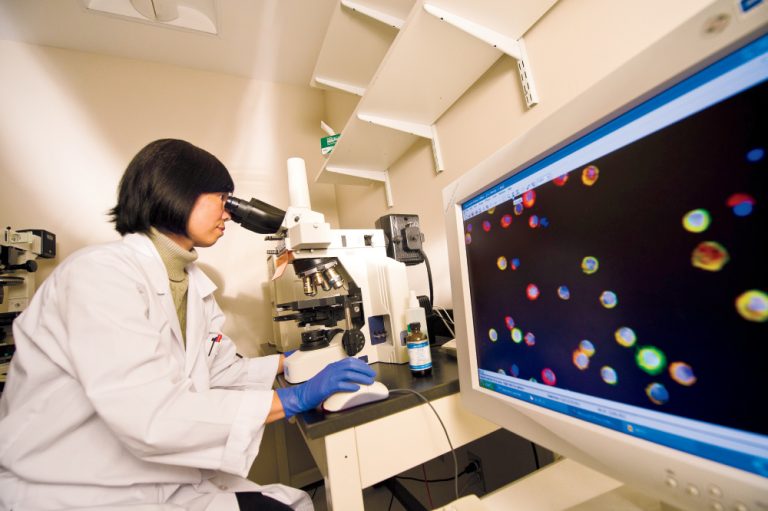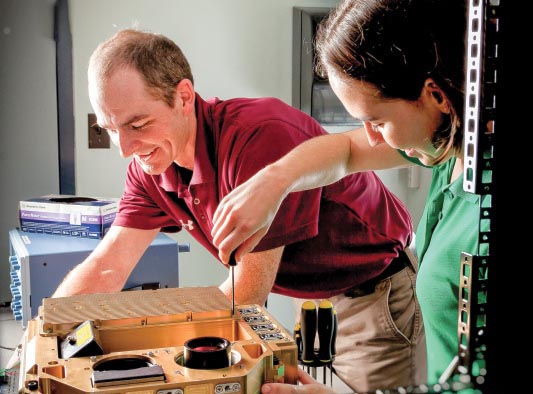Diversity Thrives in Greater Baltimore’s Strong Economy
Opportunity and inclusion appeal to workforce talent and job seekers.

A collection of assets, including a diverse and highly educated workforce, a welcoming culture, world-class education institutions, a major international airport and a cost of living lower than other East Coast markets, is making Greater Baltimore a magnet for talent and investment.
“Greater Baltimore has a great deal of diversity when it comes to economic strengths,†says Donald Fry, president and CEO of the Greater Baltimore Committee, a regional membership organization of more than 500 businesses, nonprofit organizations and educational and civic institutions.
Wealth of Assets
With powerhouse economic anchors, including Johns Hopkins University, Johns Hopkins Hospital and the University of Maryland, Baltimore, the region is a center of medicine and education. A dynamic network of colleges and universities includes the U.S. Naval Academy, Loyola University Maryland and several campuses of the University System of Maryland. Johns Hopkins Health System, University of Maryland Medical System, LifeBridge Health and MedStar Health employ more than 63,000 people.
The region’s innovation economy, which has become a hub for cybersecurity, has a foundation in key industry sectors, including information technology, life sciences and health care, manufacturing, logistics and agriculture/energy, that can leverage a workforce with undergraduate and graduate degrees far above the national average.

All that makes Greater Baltimore a headquarters location for companies such as T. Rowe Price, Legg Mason, McCormick and Under Armour.
“Greater Baltimore benefits from the diverse industry sectors that drive its economy,†says Michele Whelley, president and CEO of the Economic Alliance of Greater Baltimore (EAGB).
EAGB is the economic development organization for Greater Baltimore, bringing together business, government, education and nonprofit organizations to market the region’s economic development assets and opportunities. The seven jurisdictions that comprise the Greater Baltimore region provide a snapshot of its economic diversity.
Whelley notes the growing logistics industry in Cecil, Harford and Baltimore counties, a strong agriculture industry in Cecil and Carroll counties, the significant strength of health care and life sciences in Baltimore City and the growth of advanced manufacturing and the deep bench in cybersecurity and IT across the region.
“This diversity creates a resilient economic vitality throughout the region and multiple points of entry for career pathway jobs in these industries,†Whelley says.
The growing percentage of women-owned, African American-owned and Hispanic-owned businesses also adds to the region’s economic strength.
Promoting Inclusion
Fry notes the Greater Baltimore Committee is committed to promoting and supporting women and minority participation in the economy, especially business ownership to create generational wealth. It is also working to encourage legacy businesses to contract for products and services with women-owned and minority- owned businesses.
“A State of the Region Report we published found that during the past 20 years, women-owned firms had increased 36%, black-owned firms by 45% and Hispanic-owned firms by 86%,†Fry says.
The GBC has formed a task force to help Baltimore City update its economic plan, Fry says. Discussion points will include ensuring small-business retention and growth as well as minority inclusion, he says.
Executive Alliance, a statewide nonprofit that promotes the advancement of women in professional and executive positions, is another organization working to foster inclusiveness.
Executive Alliance supported the passage of Maryland’s Gender Diversity in the Boardroom legislation, which urges transparency and equitable and diverse gender representation on corporate and large nonprofit boards and encourages organizations to strive for a goal of 30% representation of women on their boards by the end of 2022, up from 16.8% in 2018.
“Greater diversity and inclusion in boardrooms benefits everyone,†says Patricia McHugh Lambert, past president of Executive Alliance.
To address this and other inclusion issues in the workplace, the Greater Baltimore Committee hosted the well- attended inaugural Diversity, Equity and Inclusion Summit in October 2019.
Minority entrepreneurs are the focus of The Presidents’ RoundTable (PRT), an organization of 17 African American entrepreneurs in the Baltimore-Washington, D.C., region that works to improve access to opportunities for all minority entrepreneurs.
“With demographic diversity in the Baltimore-Washington region growing, significant opportunities exist to enhance diversity in business and institutional leadership,†Fry says. “The business case for doing so has never been stronger.”
